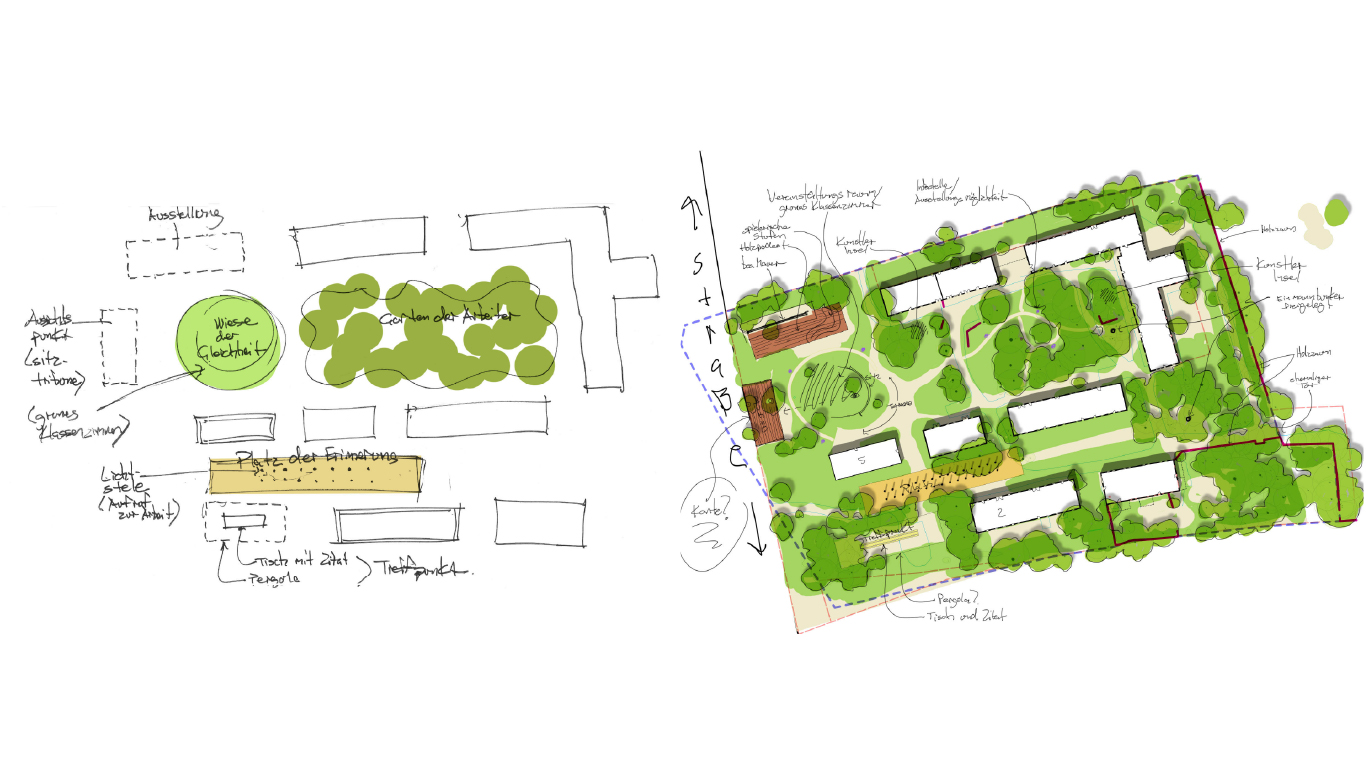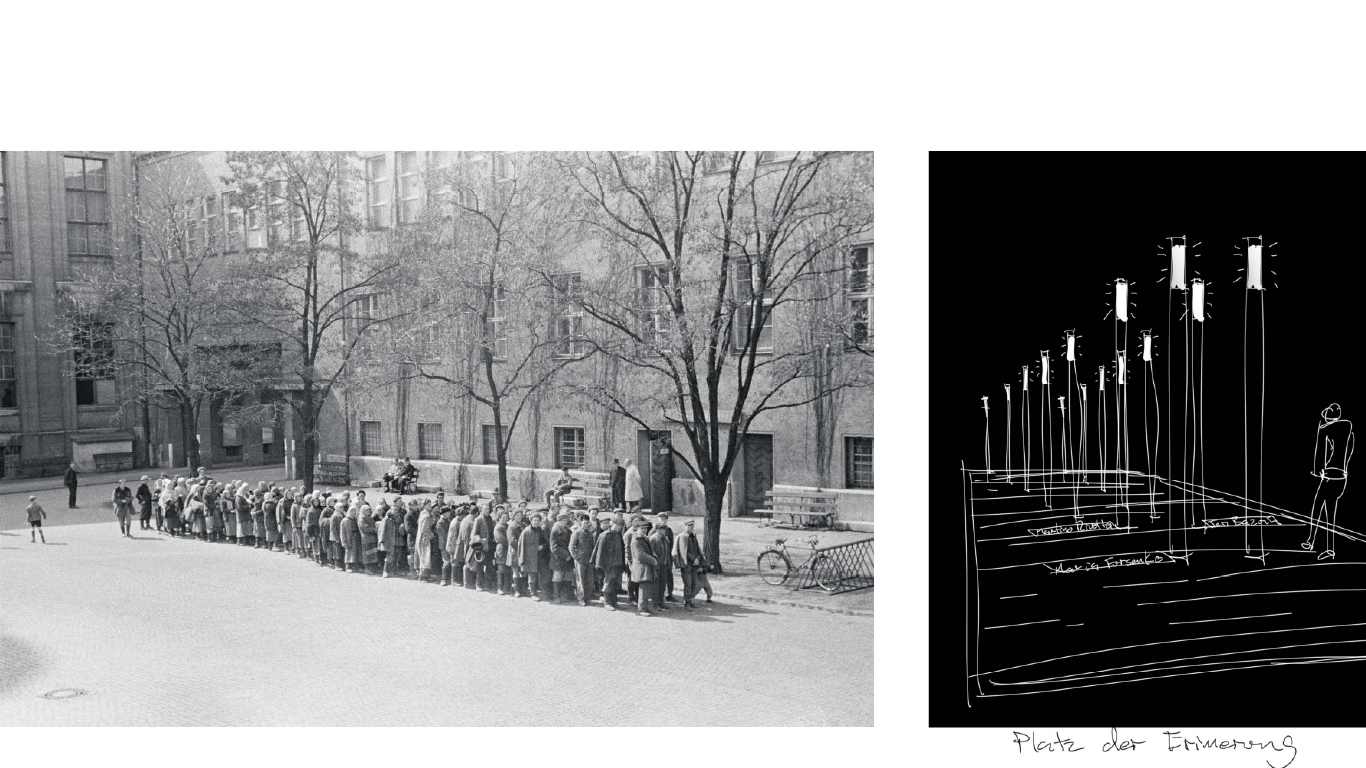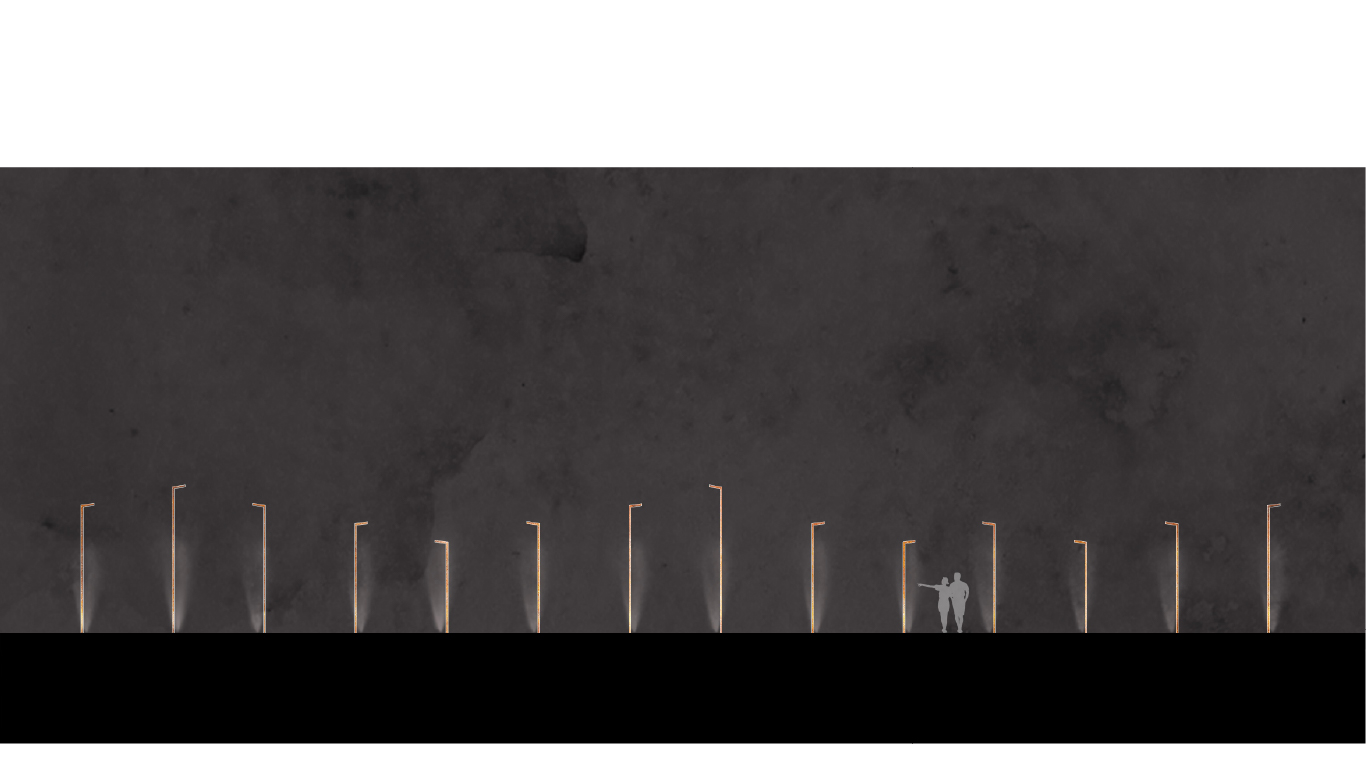How can the site of a former forced labor camp from WW2 stand as both a historical landmark and an integral part of community life? In the decades since the camp was abandoned, the barracks used by the Nazi regime to house detained laborers have been informally resettled by local artists and a kindergarten. The site, once denuded of vegetation to aid in surveillance of the prisoners, has since grown wild.
In 2021 the regional authorities issued a challenge to teams of architects, landscape architects and designers to reimagine the camp as a site of cultural significance providing space for exhibition and documentation of the history of forced labor, while maintaining the existing user groups in place. The co-existence of these varied functions should not only be legible in the architecture but also the landscape.

The initial sketches imagine three interventions in the landscape of the former labor camp. Each intervention is seen as a means of contextualizing the site in past, present and future. Each intervention also serves a functional goal of the diverse user groups.
The “Plaza of Remembrance” lies in the main axis linking the camp to the surrounding communities and serves as the entrance to the exhibition barrack. Here stands a permanent installation of lighting features recalling the daily roll call the laborers were forced to endure.
The “Garden of the Worker” lies within the central yard where prisoners were under continual surveillance. Today the area is the semi-private domain of the artists using the grounds as work space. The introduction of a garden path offers artists the chance to interact with visitors.
The “Meadow of Equality” near to the exhibition barrack is seen as a forum where visitors may gather for lectures highlighting the continuing existence of forced labor within society. It can also serve as an outdoor classroom for visiting school groups and the kindergarten. It is here that one learns to confront inequality and imagine a world free of forced labor.


Plaza of Remembrance
